Day 6: Back to Quito
Our stay at high altitude in Quilatoa (12,841 ft) will help Chris acclimate for his big climbs, but it also means we’ll need to cut something from our previous plan. Over breakfast (more yogurt over fresh fruit, bread, and eggs) we decide to make our way back to Quito, where we’ve booked a stay in a home on Airbnb. Staying the night in a hostel near El Chapo to climb Los Illinizas will be scrapped. Chris needs to get to a home base with good WiFi, so he can spend some days working while he continues to acclimatize for his big peaks later in the week.
We say our goodbyes inside to the many acquaintances in the hostel, and head outside to decide just what the best method to get back to Quito is. There’s not much time for discussion or to wish Laguna Quilotoa a sincerely fond farewell, as a man in a grey truck offers us a ride as soon as we step on to the road. We think the $6 fare for a private ride to Zumbahuaha sounds fair. Chris throws his large pack in the back, and we all jump in. We’ll find a bus to Latacunga from there.
Just a few minutes into the trip, Chris and Claire are grateful once again for the motion sickness meds (Bonine) and the Sea Bands they’ve worn on their wrists for the drives on this trip. The combination has really done the trick on the winding mountain roads taken at high speeds.
In no time at all, we arrive at a street corner in the small town of Zumbahuaha. Before we can even attempt to locate the bus to Latacunga, we’re offered another ride. This offer is $20 for the private, 1.5 hour ride. We accept quickly, knowing the bus would be cheaper and perhaps more entertaining, but take much longer with its frequent stops. Our driver playfully fights off other drivers as they approach us and offer their services as well. He rushes us to his truck before anyone can steal his passengers and fare away.
I manage to keep my eyes open for the entire trip to Latacunga this time. The highway is nicely paved, and though it winds up and down through the mountains, the drive is respectively smooth and safe. If it wasn’t clear already, it’s now crystallized that there is never a shortage of transport in Ecuador. Step out on any busy road or highway, raise your hand, and you’re sure to have someone stop and offer you passage, locals and touristas alike. No need to have your own car or plan too far in advance. Every mile or two, stands another Andean woman in traditional dress, elderly man, or local young man or woman seeking a ride. Our car is full, so our driver gives a couple quick beeps of the horn to say, “Look out!”, as he zooms on by.
We’ve learned in our short time here, that car horns say so many things; sometimes they’re greetings, sometimes warnings, other times friendly reminders that the car behind you is in a hurry, and I’m pretty sure sometimes they’re saying, “Hey! Check the intersection again. Maybe you really can go, but you haven’t noticed yet.” That’s a lot to say in a beep. One thing’s for certain, you better know how to use the horn when driving in Ecuador.
In no time at all, we find ourselves back at Cesar’s home in Latacunga. We quickly grab Chris’ big red duffel full of climbing gear and set off for the bus stop yet again. Our second time here, we’re much more familiar with this routine. We each pay for our 15 cent bathroom breaks and board the bus for Quito. This bus ride is much the same as our first, with frequent stops, letting passengers on and off as we go. There’s always loud music in the background, the driver changing stations often along the way, from reggaeton to cumbia to a more modern Latin pop. The drive wouldn’t be the same without it.
Finally after a half day of travel, we arrive at the bus terminal in Quito. It’s large and imposing, shiny and full of noise and people. It has a similar feel to an airport, but with a style I can only imagine in South America. There are bathrooms, with a woman sitting outside collecting money while she hands out measured stacks of toilet paper. The fee has risen to 25 cents in the bigger terminal. There is a two story section with vendors in small shops that resemble storage units with the doors raised. They sell fresh fruit, empanadas, burgers and sandwiches that sit out on counters at room temperature. There are little shops selling codes to recharge cell phones with data, next to others selling packages of candy and chips. The girls and Chris share a couple of chicken and rice empanadas warmed in a microwave after he buys more data for his phone. Then we’re on our way.

We ignore our intuition, and accept a ride from a man that isn’t an official taxi driver. He speaks quietly, ducking behind pillars, and walking quickly as he dodges the eyes of officials in the terminal. Why exactly we follow through with it is unclear, but we let our guard down and regret it before his car is ever begins to move. Quito is a very large city, and our directions to our Airbnb home in an obscure corner of town confuse the driver. His driving is quick, erratic, and emotional as he takes us in a direction we know is wrong. For the first and only time on this trip, we find ourselves scared for our safety. He stops at a light, takes off his hat, and nervously wipes sweat from his brow over and over again. His honk to the woman ahead of us, when he’s clearly in the wrong, isn’t friendly at all. It seems to be much more confrontational than the cute little “beep, beeps” in the back country. He even yells obscenities and shakes his fist at the poor woman he almost causes to wreck, while he continues to ignore Chris’ GPS and pleading to turn around. I comically growl out, “Tu es no correcto!” in the meanest voice I can muster. My Spanish es no correcto too. The worry that we are a car full of naive gringos easily taken for ransom, becomes a near certainty in the whirling mind of Chris. And just as he puts the finishing touches on his secret plan to take control of the steering wheel, while I use my backpack straps to restrain the driver, all the worry and dramatic planning is suddenly for naught. Unexpectedly the driver begins to understand where he’s being asked to go and begrudgingly turns around and follows the voice on the GPS (Chris translating from English to Spanish).
We finally arrive on the correct street, where we hurriedly overpay the driver who increases our fare at the last minute. We’re eager to get him on his way, so we don’t argue when he explains it’s our fault he went the wrong way in the first place. Humbled and defeated by our $10 lesson, we walk, our shoulders slumped and our steps much less confident, down the road in search of our home for the week.

At the end of this cobbled street of volcanic stone,

we find this gate.
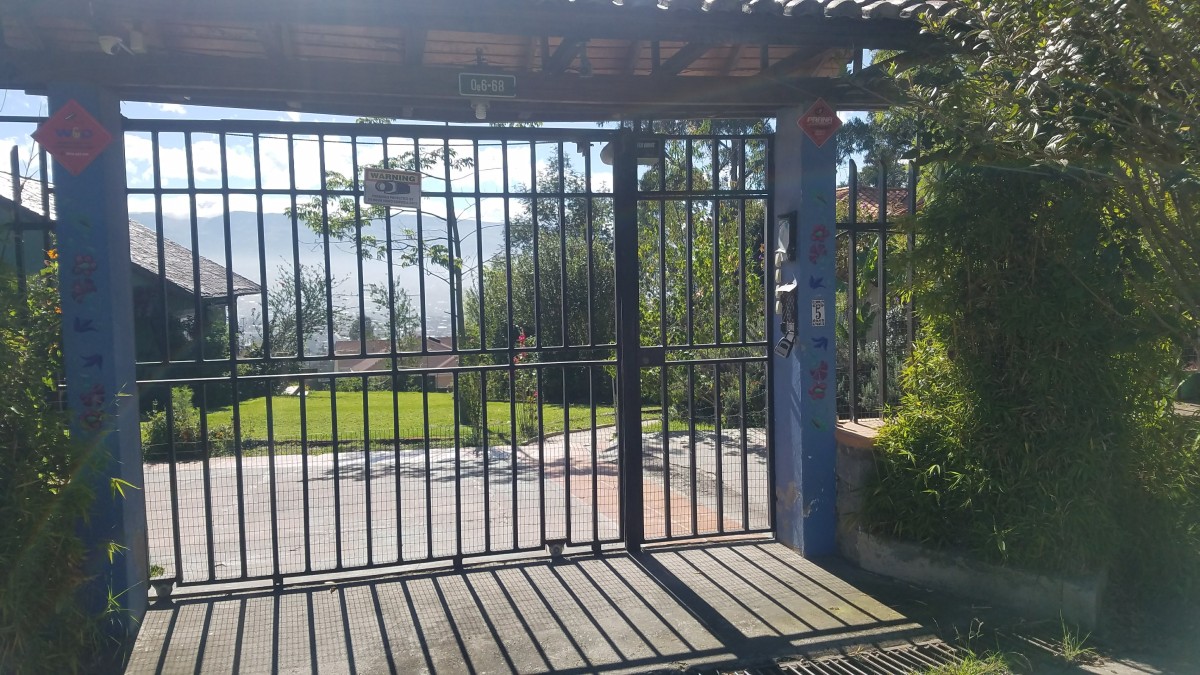
It leads us to this warm and inviting walk,
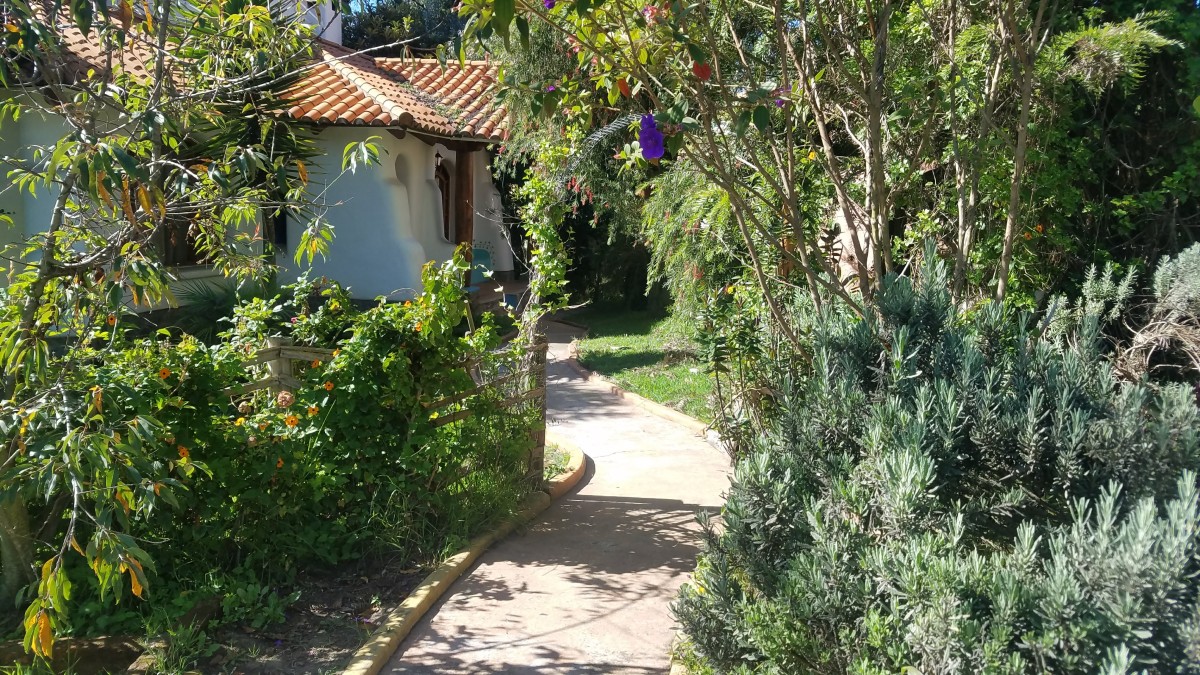
where we’re met with the immediate comfort and security of what will be our home for the next six nights.
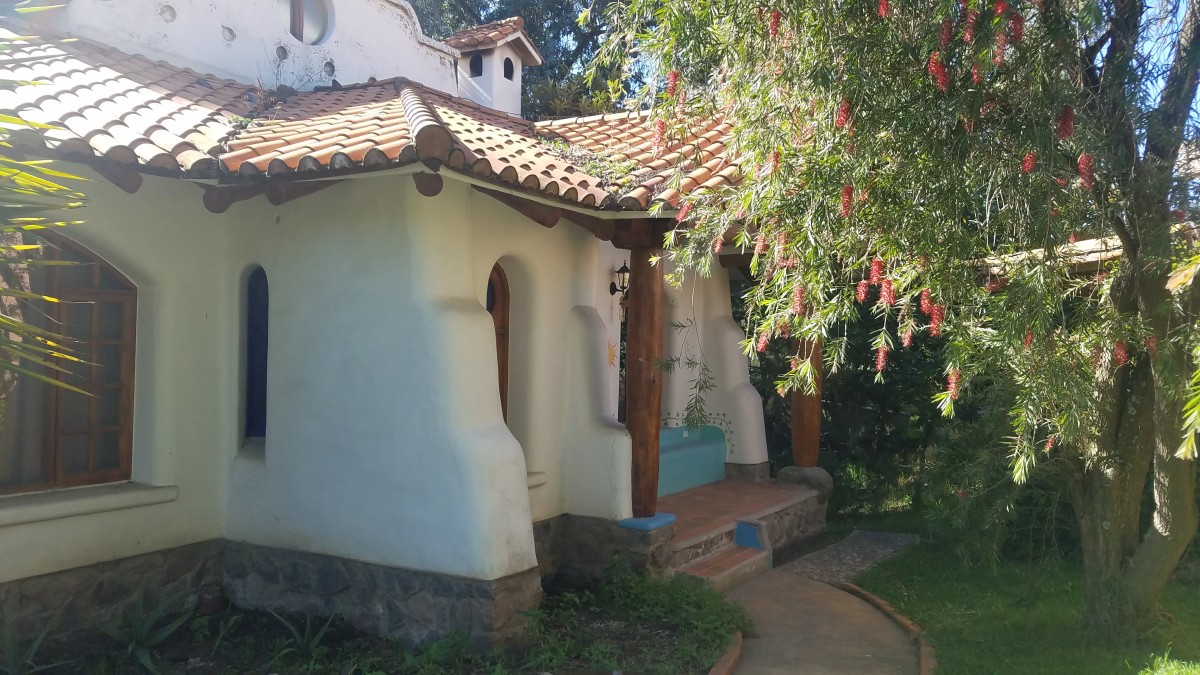
Our welcoming host, Jim, takes us back up the road to show us the local tiendas and bus stop, but we come right back here. Drinking our coffee and tea, we sit on this deck near our bedroom, looking out on the city. Chris uses the WiFi to work remotely, while the rest of us relax.
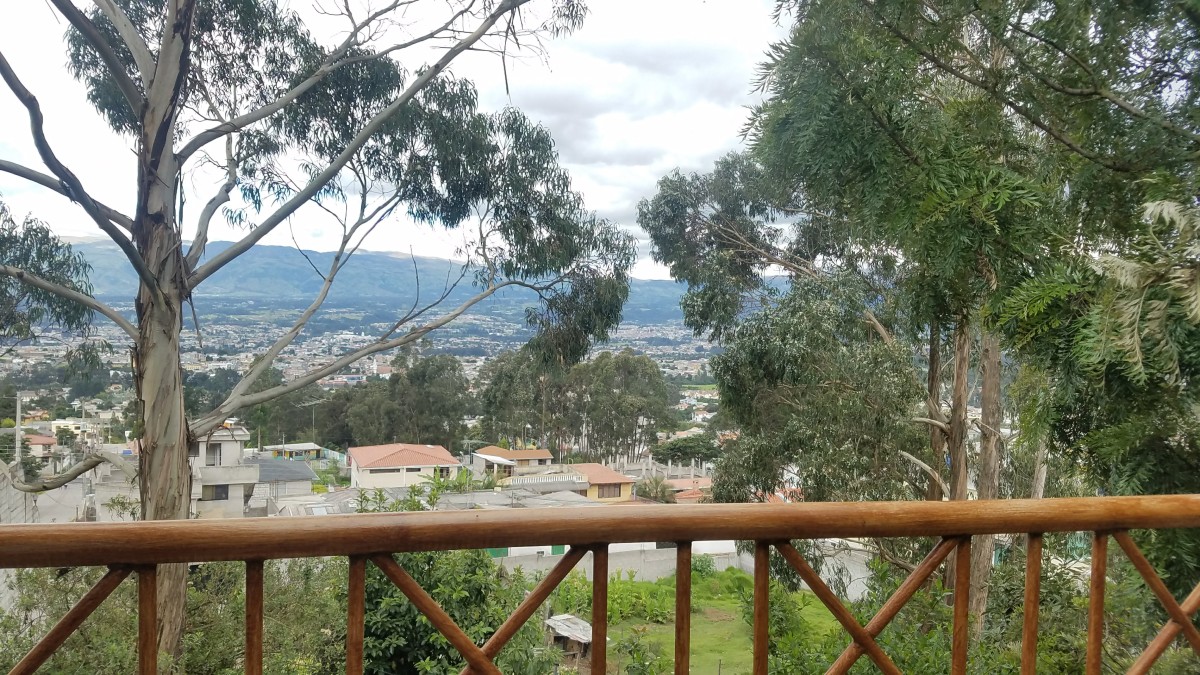
The city is not at all quiet, but somehow we quickly find peace here. Not even wanting to leave in search of something to eat for dinner, we opt for bowls of oatmeal, all the necessary ingredients already available to us in the kitchen. 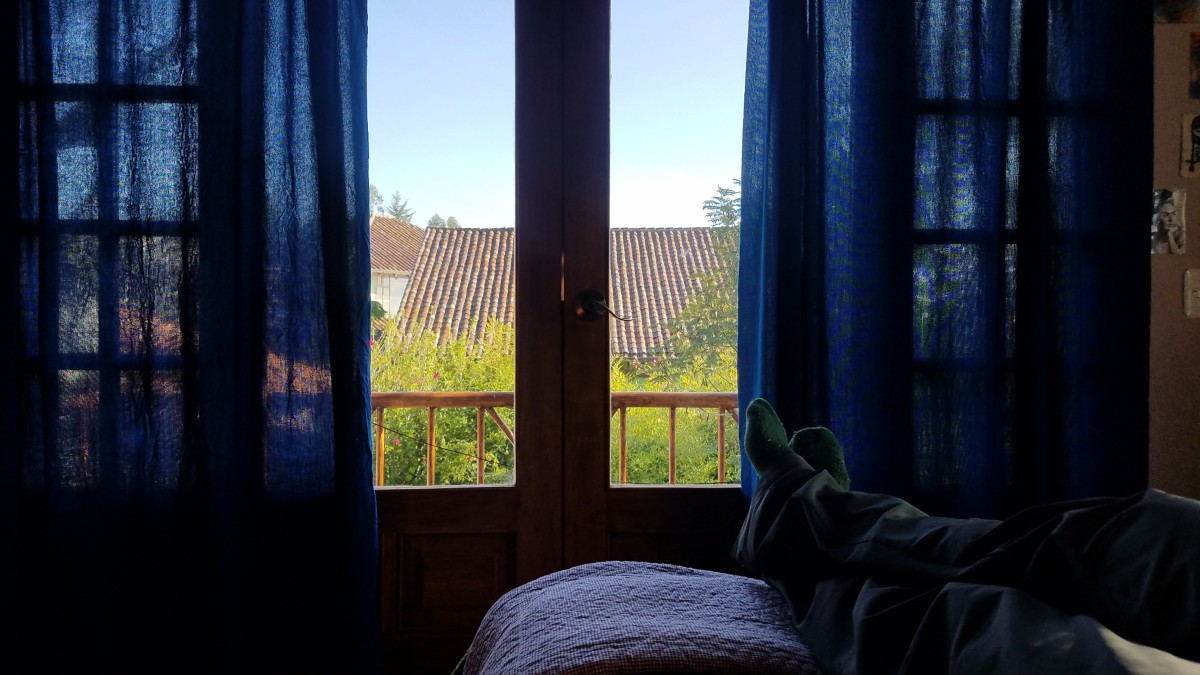
We never knew that geese could scream, but here, in the middle of this gigantic city, the geese in the backyard behind ours, do just that. They scream us to sleep, with the accompaniment of car horns, music, and bus engines. We don’t mind. We sleep long and deep and without a care.
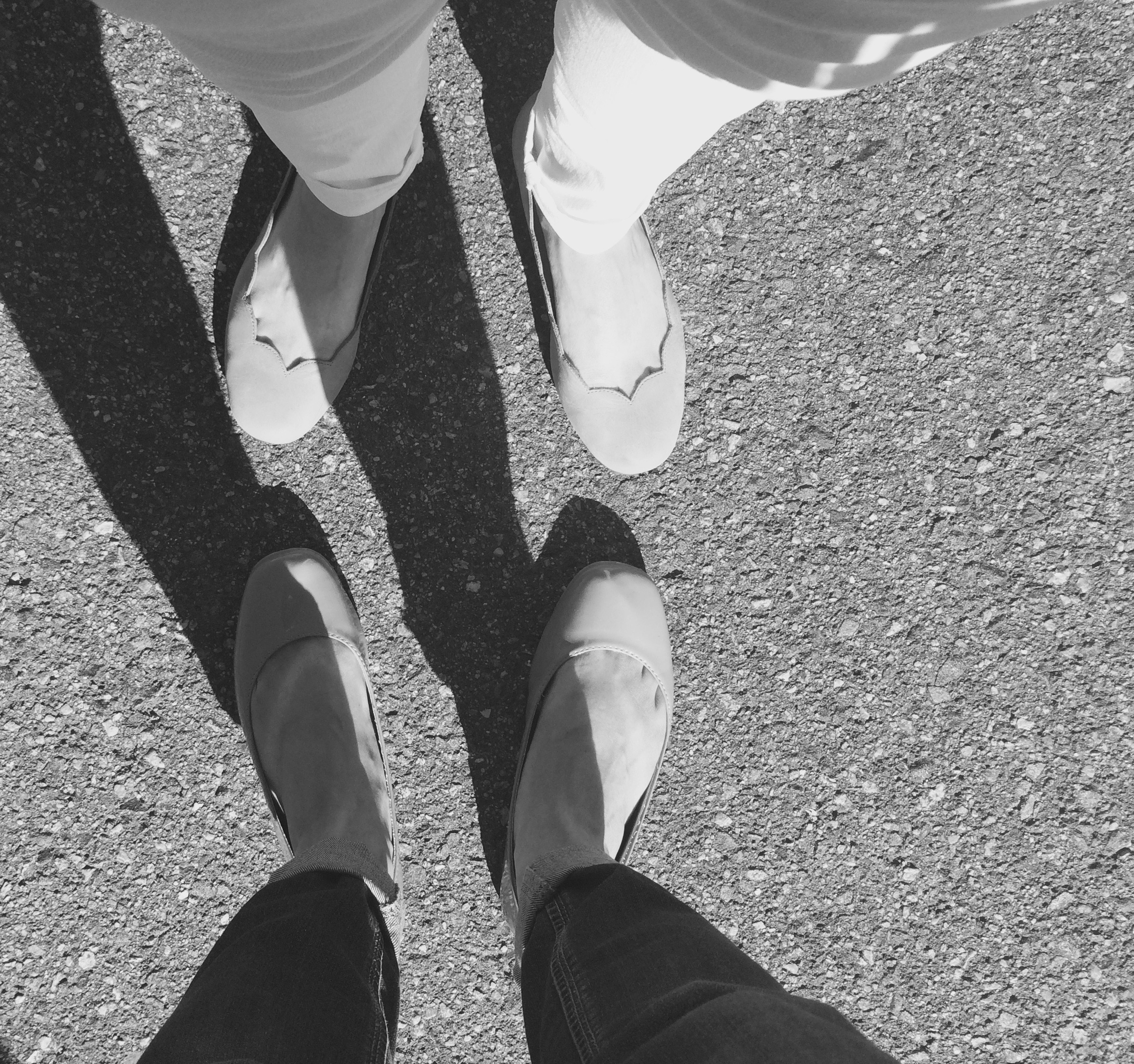


[…] <–Day 6 […]
LikeLike